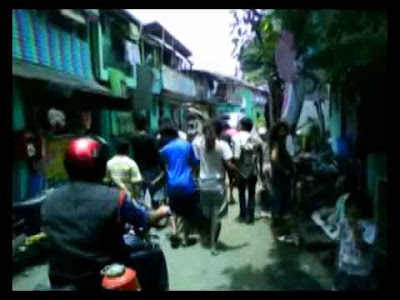Sekelompok
desainer di Jakarta bermufakat membuat sejumlah tempat bermain untuk anak-anak
di kolong jembatan layang. Apakah ini tindakan ilegal?
Dari perspektif
hukum memang sudah pasti jawabannya ya, namun dalam pandangan moral dan
kemanusiaan jelas tidak sama sekali!
Dari laporan
DPP Asosiasi Pengembang Perumahan dan Pemukiman Seluruh Indonesia (Apersi) pada
2012, masyarakat Jakarta yang berpenghasilan
rendah menduduki peringkat kedua dari seluruh provinsi di Indonesia yang tidak
memiliki rumah. Jumlahnya sekitar 5 juta jiwa.
Peringkat
pertama dipegang oleh Jawa Barat, sementara yang ketiga disandang Jawa Timur.
Kebanyakan masyarakat berpenghasilan rendah di Jakarta tinggal dengan menyewa
rumah atau mengontrak. Yang lainnya, harus menerima nasib hidup di area tidak
layak, seperti kolong jembatan dan kawasan kumuh.
Mereka tidak
sanggup membeli rumah susun. Daya belinya belum sampai. Di sisi lain, kalah
bersaing dengan pembeli yang tujuannya investasi dengan “mengakali” peraturan
perundangan pemerintah daerah.
Dari kenyataan
tersebut, bagaimana kita berharap anak-anak bisa tumbuh sehat jiwa dan raganya
apabila melalui masa kecilnya tinggal di
kolong jembatan?
Dari sanalah
peran seni dan desain begitu penting untuk tidak sekedar eksis karena dikatakan
artistik, namun sikap untuk berpihak dengan mengedepankan fungsi kemanusiaan
bagi khalayak yang tak mampu.
Pada kasus
ini, memberi tempat bermain berarti memberi kesempatan anak-anak di bawah kolong
jembatan hidup lebih wajar. Bukankah, masa kanak-kanak adalah masa bermain dan
bersenang-senang?
Pada akhir 2011,
selama berbulan-bulan, para desainer yang menamakan dirinya kelompok Ambitexts:
Jogjakarta Designer Consortium's itu mengadakan
riset dan berdiskusi dengan tim Kurator.
Mereka akhirnya
membangun tempat bermain di tiga titik di bawah jembatan layang di lokasi yang
berbeda di Jakarta, dimana banyak anak kecil dan orang tuanya atau keluarganya
tinggal di bawah kolong jembatan.
Karya yang
disebut BakDang (Jebakan Kandang) tersebut kemudian menjadi bagian penting dari pergelaran out
door zona seni publik di acara Jakarta Biennale#14, 2011 lalu.
A group of
designers in Jakarta have agreed to create a playground for children under the flyover.
Is this breaking the law?
From a legal
perspective, surely the answer is yes, but in the view of humanity and morality
is clearly not at all!
According to
a report from the central bureau of the
Association of Indonesian Housing and Developers (Apersi) in 2012 approximately
5 million low-income people in Jakarta have no home.
Jakarta was
ranked second of all provinces in Indonesia where people do not have homes. The
first rank is held by the province of West Java, while the third carried the
province of East Java.
Most
low-income people in Jakarta living by renting houses. The others have to
accept the fate of living in uninhabitable areas such as under flyovers and
slums.
They can not
afford to buy a flat. The purchasing power is still low. On the other hand,
they are not able to compete with the buyer who has a goal to the investment
and violate local laws.
From these
facts, how could we expect children to grow both body and soul will be
healthier if through their childhoods living under a flyover?
From the
last point, the role of art and design is so important to not just exist
because it says artistic. But it also is an attitude we are to stand for the
function of art to humanity.
In this
case, providing a place to play means allowing children to live under a bridge
with a more feasible. People say that childhood is a time to play and have fun
and they have the right to get it.
At the end
of 2011, for months before, the designers who call themselves the Ambitexts:
Jogjakarta Designer Consortium's researching and discussing with the team of curators.
They
eventually built a playground under an overpass in three-point of different
locations in Jakarta, where many children and their parents or their family
living under a bridge.
The artwork
is called BakDang-Jebak Kandang (The Cage of trap) was then an important part
of out door zones of public art in the Jakarta Biennale # 14, 2011.
source: properti.kompas.com
vivanews.com
Ambitexts: Jogjakarta Designers Consortium's
Jakarta Biennale#14, 2011
SatuLingkar.com
megapolitan.kompas.com
megapolitan.kompas.com
















.jpg)